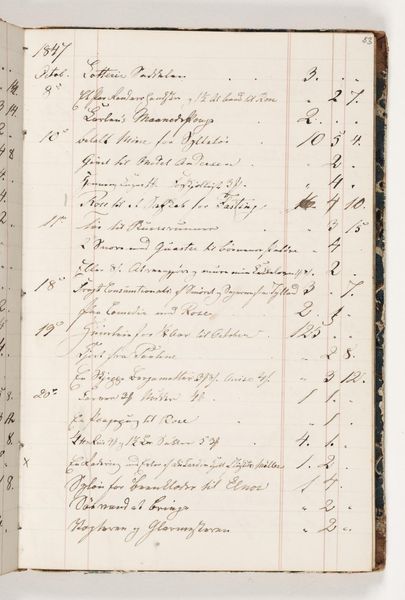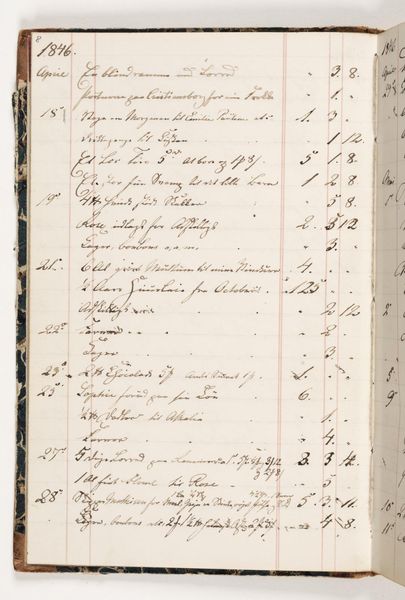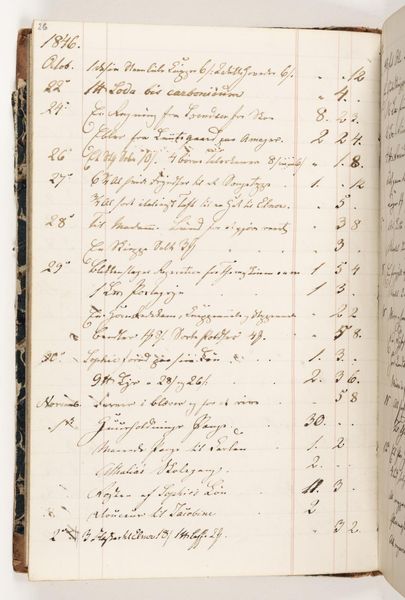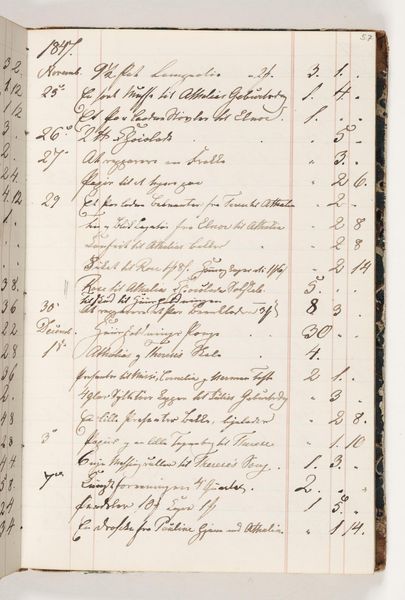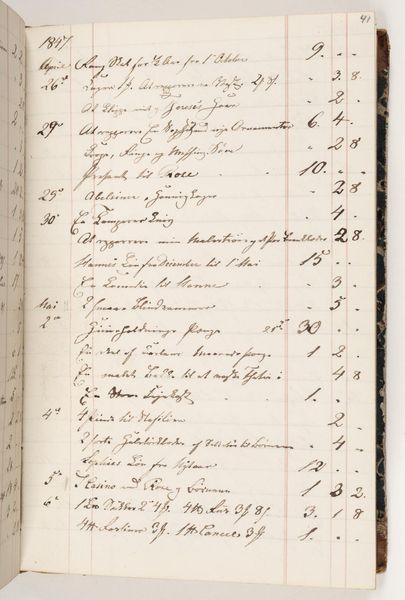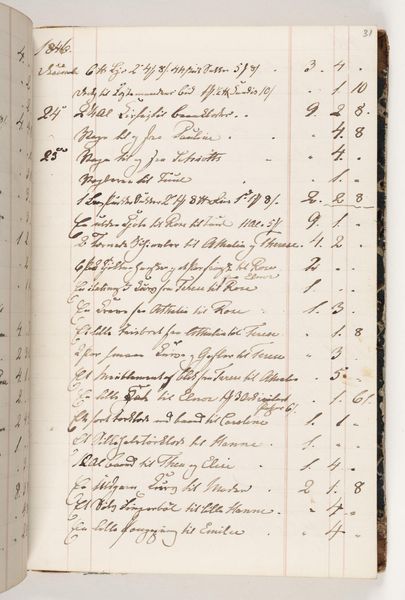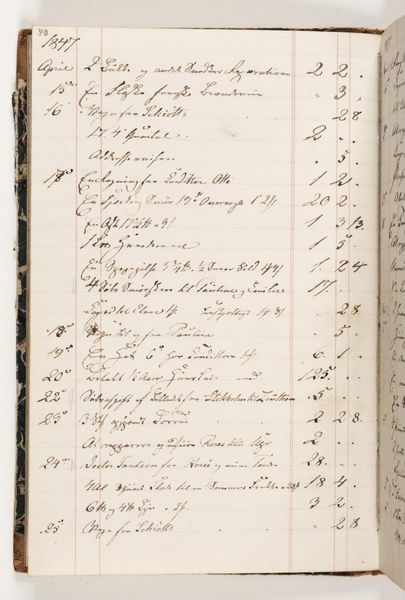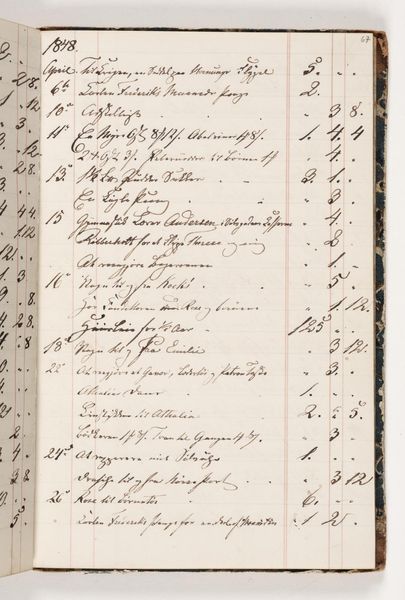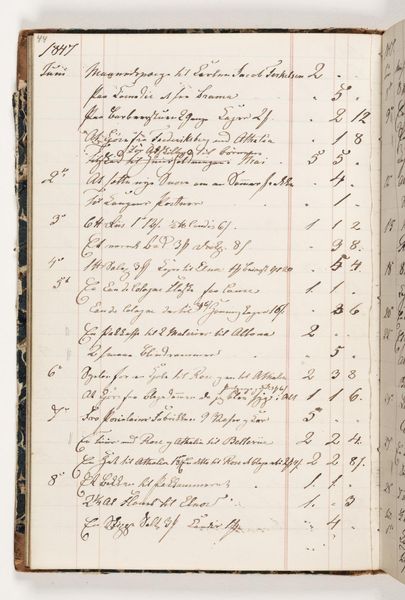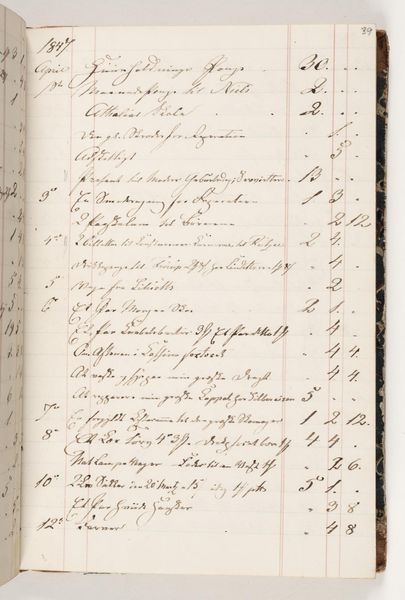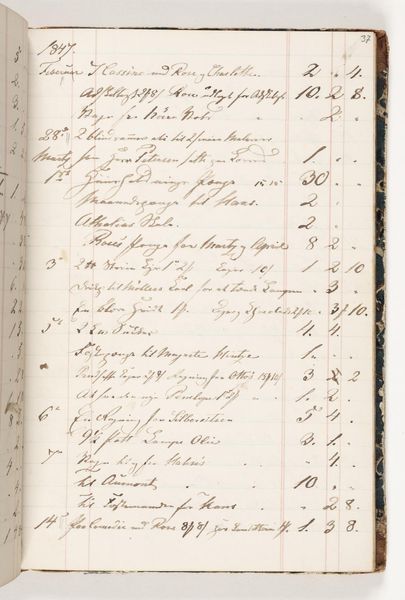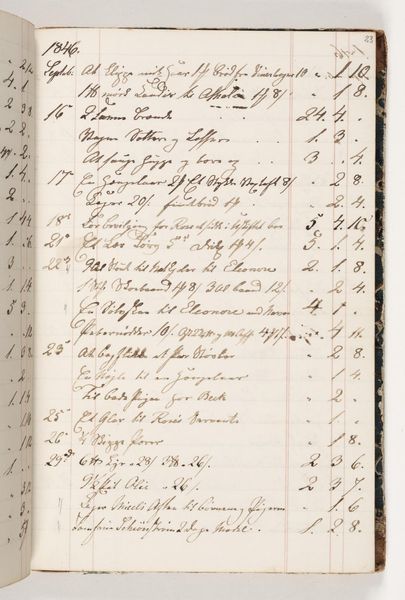
drawing, paper, ink
#
drawing
#
paper
#
ink
Dimensions: 200 mm (height) x 130 mm (width) (bladmaal)
Editor: Here we have Martinus Rørbye’s “Regnskab 1846,” a drawing rendered in ink on paper. It strikes me as a rather unusual piece to find hanging on a gallery wall - it seems to be a page torn straight from a ledger. I'm curious, what significance do you see in a work like this? Curator: Precisely, this challenges the traditional notion of art! As a materialist, I look at this less as a drawing, and more as a document of labor. We see the tools of commerce laid bare: ink, paper, the very act of accounting. It makes us think about the material conditions that underpin even artistic creation. The red lines methodically rule the page for calculation of the value of… what appear to be fabric scraps or small items of apparel! Editor: So, the content of the list is relevant? It’s not just about the physical materials? Curator: Absolutely! The mundane details – the fabric, the little bits of "stuff"—invite questions about 19th-century economics and the commodification of even basic goods. The social lives implied by such a ledger challenge the idea that “art” must transcend everyday existence to be considered valuable. Do you think that Rørbye might have chosen an account to invite commentary? Editor: Possibly! It does push the boundaries of what we expect from art. I guess I'd never really thought about how something as simple as a ledger could speak to broader issues of production and labor. Curator: It's about looking beyond the surface, engaging with the nuts and bolts—or rather, the ink and paper—that form the foundation of art and, indeed, society itself.
Comments
No comments
Be the first to comment and join the conversation on the ultimate creative platform.

